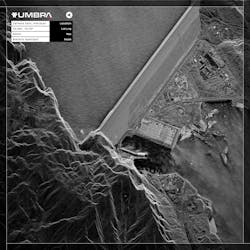Umbra releases bistatic SAR data from its tandem pair of satellites
SANTA BARBARA, Calif., - Umbra, a space technology company in Santa Barbara, Calif., has announced the release of imagery from its tandem pair of Synthetic Aperture Radar (SAR) satellites. Umbra is set to provide customers with bistatic SAR data later in 2024.
Bistatic SAR is a radar configuration where the transmitter and receiver are located on separate platforms. In a traditional monostatic SAR system, the same platform serves as both the transmitter and receiver. However, in bistatic SAR, these functions are split between different entities.
In bistatic SAR, one platform, known as the transmitter, emits radar signals towards the target area. The other platform, called the receiver, captures the signals reflected off the target. The separation of transmitter and receiver can offer certain advantages in specific applications.
Related: SpaceX launch sends four private astronauts to ISS
The monumental launch of Umbra's first tandem pair of satellites, Umbra-07 and Umbra-08, aboard the SpaceX Transporter-9 mission on 9 November 2023, marked a significant leap in SAR imaging. With eight satellites currently in orbit, Umbra plans to deploy the remaining satellites in its licensed 32-satellite constellation in strategically designed pairs.
Operating satellites in a cluster formation facilitates multistatic collection and other integrated operations, offering distinctive phenomenology and inherent resilience. This approach opens the door to various applications, including Intelligence Surveillance Recognizance (ISR) capability, elevation modeling, imaging resilience, and the implementation of moving target indication techniques.
Umbra's development of the technology necessary to automate formation flying and multistatic data processing has been dramatically accelerated by the Defense Advanced Research Projects Agency (DARPA) over the past year, which selected the company as a partner for its Distributed Radar Image Formation Technology program.
With the unique ability to capture images at day/night, and all-weather capable, Umbra's SAR satellites are suitable for monitoring change. Umbra's SAR satellites deliver SAR data at high volumes and area density, enabling the US. Government, its allies, and commercial partners with actionable, all-weather insights.
